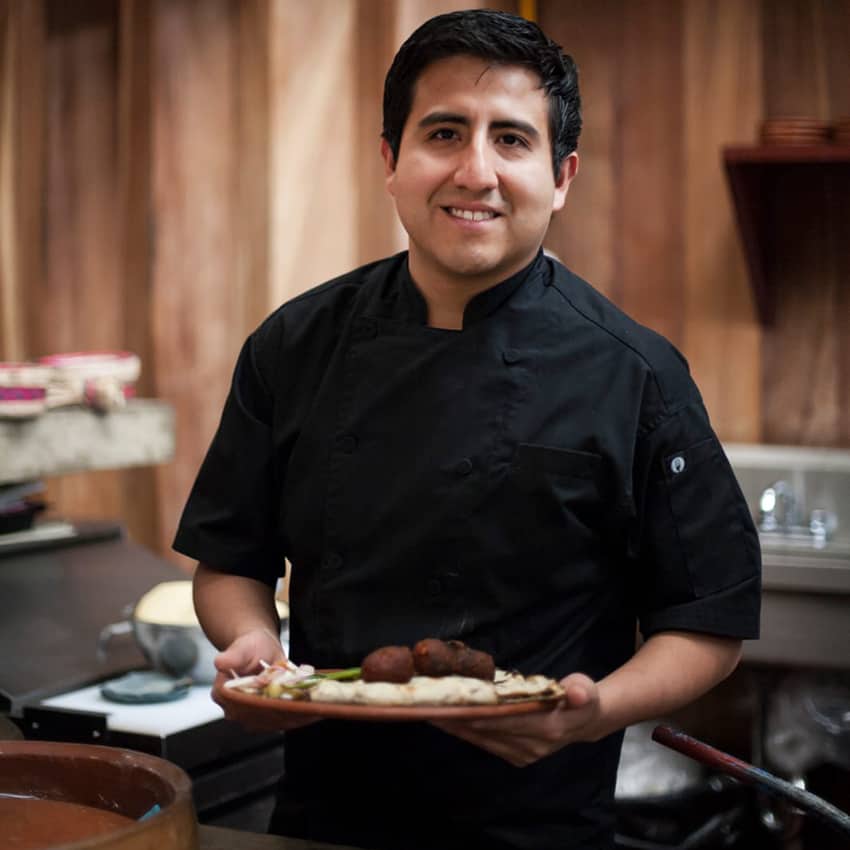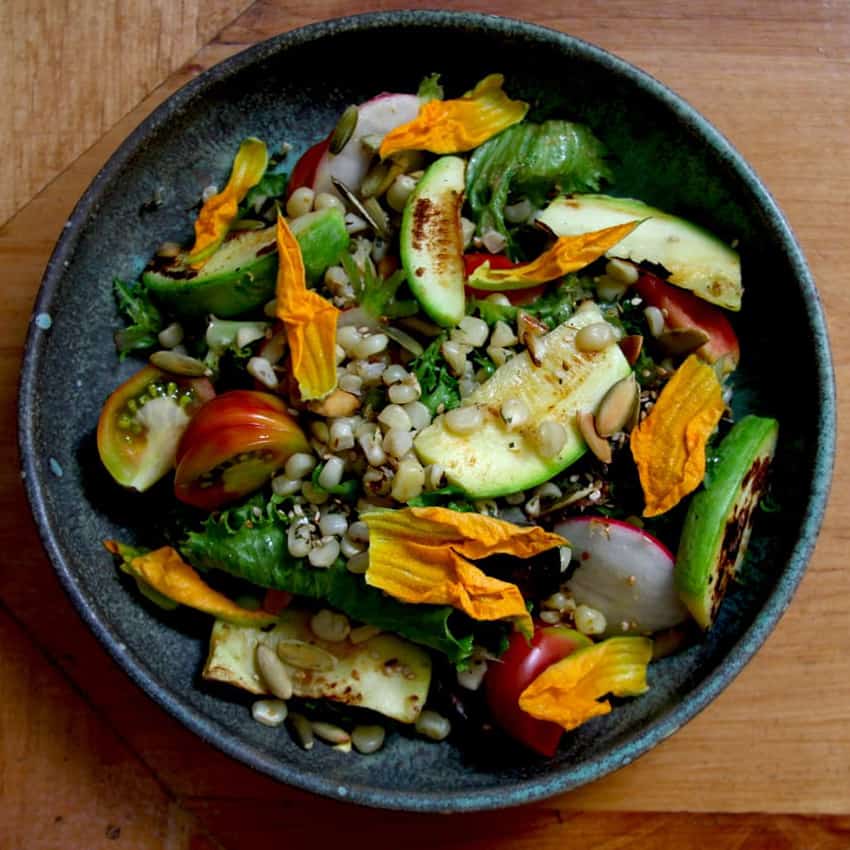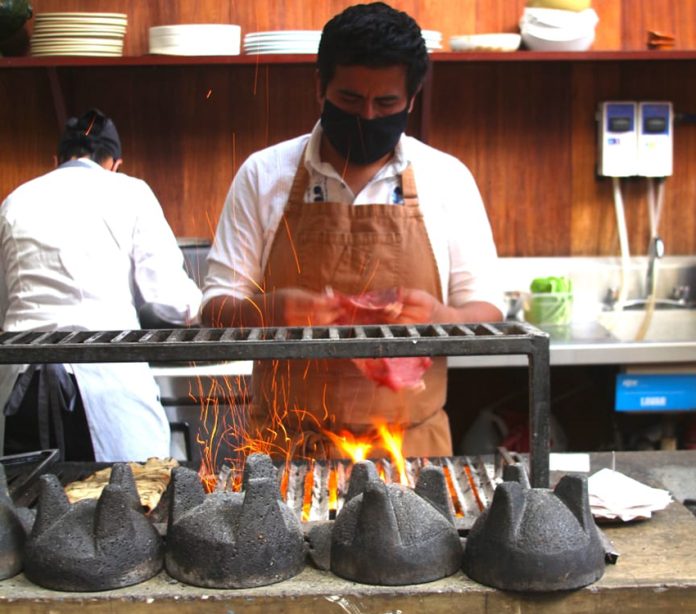“As chefs, we are the ‘messengers of our mothers and grandmothers who cooked for centuries. We are tasked with conserving the cooking traditions of our communities,” says Oaxaca chef Alam Méndez. “Our role is particularly important for those people who did not have the pleasure of being born in Oaxaca.”
Méndez had the pleasure of being born in Oaxaca in 1990, one of three children of another renowned Oaxacan chef and food expert, Celia Florían. This probably “sealed his fate.”
He practically grew up in his parents’ Oaxaca city restaurant, Las Quince Letras, living in the same building until he was 16. He accompanied his father to the market to buy supplies and was given a portion thereof to “play with.”
In middle school, he decided to follow in his mother’s footsteps and began doing some work in the kitchen when he was 14.
“As long as I can remember, the kitchen has been a part of my life — open the door of my house and you are in Las Quince Letras. It wasn’t obligatory; [it was] … something I enjoyed immensely,” says the chef.

His parents started the restaurant with no formal training in the business, just a passion for the cooking of their childhoods. Méndez, however, decided to take this passion out into the culinary world of Mexico and beyond.
First, he studied at the Culinary Institute of Mexico in the city of Puebla, then he worked in various restaurants in Mexico, Europe, Guatemala and Chile. One thing his international experience taught him is that it is possible to recreate authentic flavors of Oaxacan cooking outside of the state.
He returned to Mexico from Europe in 2016 to start the Pasillo de Humo (Smoke Hall) restaurant in Mexico City, a small place located in an upscale “food market” called Parían in the international neighborhood of Condesa. Pasillo de Humo refers to the section of Oaxacan markets where grills cooking sausage, marinated beef (tasajo) and more line up and wait for hungry patrons.
Initially, the restaurant’s purpose was to bring authentic Oaxacan flavor to the capital. It still offers 100% authentic dishes such as tlayudas and chicken in red mole sauce.
His efforts here have not gone unnoticed. Food writer and editor James Oseland included Méndez in his cookbook on Mexico City, stating “Pasillo de Humo is a well-appointed restaurant for certain kinds of upscale diner, but the food really does conjure Oaxacan authentically. The flavors and textures of the state come through even in a world so different from his own.”
Méndez was one of seven Mexican chefs selected to compete in the semifinals of the S. Pellegrino Young Chef 2018 competition.
His family’s Oaxacan cooking forms the basis of his work, but his professional training and experiences in Mexico and abroad have broadened his horizons.
“I love Oaxacan cuisine, and I love using herbs, vegetables and other products of the fields,” he says.
But he has also learned to appreciate the cooking in other parts of Mexico and the demands of a sophisticated urban market. For example, he will never change his mother’s mole negro sauce (her pride and joy), but he has experimented with putting it over duck instead of the traditional turkey and cooking the meat in a manner more sophisticated than simply boiling it.
One dish that shows his respect for the other cuisines of Mexico is oregano chicken with mole rojo. (Oregano is a Mediterranean herb that is used in various parts of Mexico but not so much in Oaxaca.) His experimentation has received approval from his traditional mother.
“His ability to combine tradition with the contemporary, making dishes his own, is something that fills me with pride,” she says.
Oaxaca is one of Mexico’s most traditional states, and it might seem unusual for a man from here to become a chef. Méndez disagrees. It may have been that way in the past, he says, but certainly not now. In addition, certain dishes in the state have always been cooked by men, especially for major gatherings, he explains.

One example is caldo de piedra (literally “stone soup”), where the broth is boiled by adding a heated rock. Another is barbacoa, traditionally made in a pit dug into the earth.
Méndez’s international experience and a chance meeting with restaurateur Chad Sparrow has taken him to the United States, more specifically to Washington, D.C. Sparrow visited Pasillo de Humo and, highly impressed with what he saw and tasted, offered Méndez the head chef spot and the chance to be the inspiration behind Urbano 116, a restaurant with the aim of recreating authentic flavors of Mexico City.
Unfortunately, this did not pan out. The high-end restaurant business is an unforgiving one, and the owners switched gears to, of all things, Tex-Mex cuisine. Méndez understandably decided to leave the venture. But he still believes that there is a market for authentic Mexican regional food, especially in D.C. He has started a new joint venture called Maíz 64. The 64 refers to the number of varieties of native corn in Mexico.
Méndez hopes to open the restaurant by the end of the month and reproduce traditional Oaxacan fare. Oseland shares Méndez’s optimism about promoting the cuisine in the United States, noting that tastes for Mexican food have become more sophisticated in the past decades.
“What is so special about what Alam can offer a diner in Washington, D.C. is a chance to taste the true flavors of Oaxaca,” he says, “because who better to channel them than Alam, who ‘literally’ has Oaxacan food flowing through his veins.”
Leigh Thelmadatter arrived in Mexico 18 years ago and fell in love with the land and the culture in particular its handcrafts and art. She is the author of Mexican Cartonería: Paper, Paste and Fiesta (Schiffer 2019). Her culture column appears regularly on Mexico News Daily.
